Tourism, the mainstay of the Union territory of Jammu & Kashmir, crippled by long years of militancy and civil unrest, is reviving.

Tourism, the mainstay of the Union territory of Jammu & Kashmir (pop. 12.3 million), crippled by long years of militancy and civil unrest, is reviving. An aggressive promotional campaign of the government coupled with tempting packages has prompted a resurgence of tourist inflow into the Kashmir Valley, even in the off-season winter months.
In 2019 the state hosted over 2.5 million tourists. The government is giving top priority to tourism to help the industry flourish as it did in its heyday, before the spurt of militancy in the early 1980s.
The year-round inflow of tourists and return of Bollywood film crews is an indicator of abatement of terrorist violence which has also prompted the promotion of golf and adventure tourism.
Geographically, J&K comprises the Kashmir Valley, Jammu and the districts of Ladakh and Zanskar spread over a total area of 318,937 sq.km. Two years ago, the Jammu and Kashmir Reorganisation Act, 2019 was passed by both houses of Parliament, which re-constituted the former state of Jammu and Kashmir into two Union territories, Jammu and Kashmir and Ladakh, with effect from October 31, 2019.
The great majority of tourists head for the Kashmir Valley, of which the summer capital Srinagar with its picturesque Dal lake and fully-furbished houseboats are popular attractions. The Jammu, Ladakh and Zanskar districts are also high-potential tourist destinations in their own right, once Indo-Pakistan rivalry over the disputed status of Kashmir is resolved and peace is established in the region.
Foreigners including Sultans, Mughals, Afghans and Sikhs intermittently administered Kashmir, a Hindu kingdom until the 14th century. The Amritsar Treaty signed between the British East India Company and Maharaja Ranjit on March 16, 1846 gave birth to the state of Jammu & Kashmir. As per the treaty, Kashmir and all the hilly and mountainous regions situated eastward of river Ravi were ceded by Maharaja Ranjit Singh for a sum of Rs.75 lakh to the British in lieu of indemnity to Maharaja Gulab Singh, a Dogra warlord of Jammu, who remained neutral in the battle between the British and Sikhs. Dogra rule over J&K ended in 1947 after the princely state acceded to India.
The verdant Kashmir Valley is bound by the main Himalayan range (northeast) and the Pir Panjal range (southwest) in northwestern India. The valley is an ancient lake basin 140 km long, and 32 km wide situated 5,300 ft above mean sea level. Drained by the upper Jhelum River, it is sheltered against the wet southwest monsoon by 12,000-16,000 ft high mountains which make the period June-September ideal holiday months.
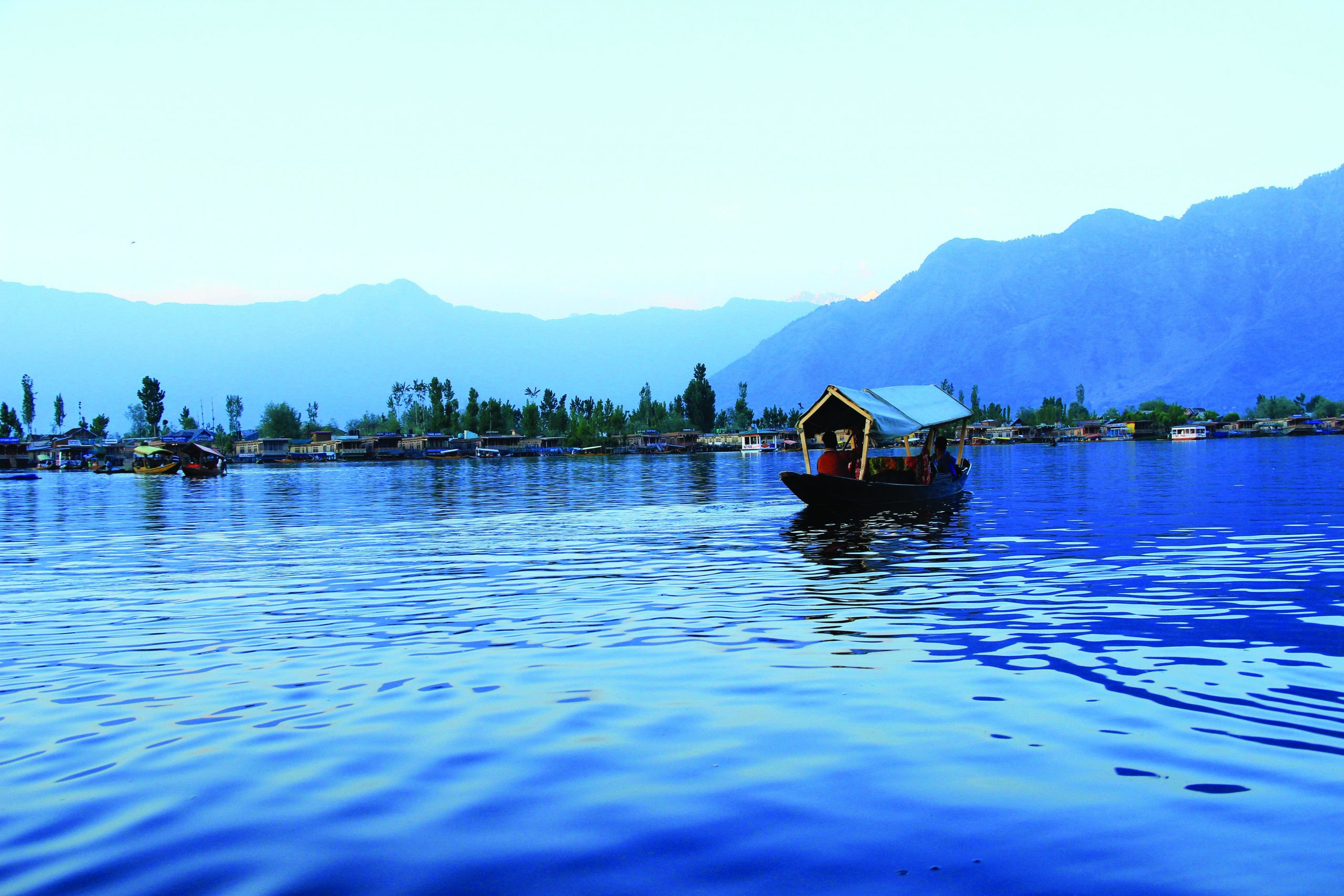
Raj Taringini, a chronology of Kashmir’s kings written by Kalhana, eulogises the charm of Kashmir as being “as beautiful as Goddess Parvati manifest; and its owner is Lord Shiva himself”. Likewise, the 17th century Mughal Emperor Jehangir was so enchanted by the temperate climate and flora and fauna of the Kashmir Valley that he exclaimed “if there is paradise on earth: it is this, it is this”. The only saffron cultivation region of South Asia, the territories offer tourists awesome mountain, lakes, meadows vistas, treks and wildlife safaris.
Temperatures are influenced by altitude and in Srinagar average temperatures range between -2° C in January and 31° C in July. The Union territory’s spectacular flora includes cedar, blue pine, walnut, willow, elm, and poplar trees upto altitudes of 7,000 ft; coniferous forests of fir, pine, and spruce upto 10,500 ft. Amazingly above 12,000 ft meadows bloom with rhododendrons and honeysuckle as well as dwarf willows. Golfing at 10,000 ft above sea level, water-skiing in the lakes and angling for prized rainbow trout, or simply drifting down the willow fringed lakes in shikaras and luxuriating in calm houseboats are some of the most favoured pursuits.
Srinagar
Well connected by road and air with the rest of the country and Delhi in particular, Srinagar (pop. 1.1 million) is the usual starting point of most visitors to the Kashmir Valley. Sited at the confluence of the Dal lake and River Jhelum, Srinagar comprises the old city near Hari Parbat and the modern half further up the Jhelum. Set amid clear lakes and lofty mountains at an elevation of 5,200 ft, Srinagar is dominated by the Jhelum, Dal and Nagin lakes. The Dal lake with its floating gardens is a popular draw, as are the nearby Shalimar and Nishat gardens.
The summer capital of J&K, Srinagar is also the hub of a thriving carpet industry, in addition to silk, silverware, copperware, leather and woodcarving industries. While in the city visit the Hazratbal Shrine sited on the left bank of the Dal lake; it houses moi-e-muqqadas — the hair — of Prophet Mohammed revered by Muslims across the country. The Shankaracharya Temple, sited at 1,100 ft was constructed by Raja Gopadatya in 371 BC and is the oldest temple in Kashmir. Jamia Masjid in the heart of the city is an architectural wonder which can accommodate up to 30,000 people at a time. Hari Parbat Fort, built by the Afghan Governor Atta Mohammad Khan (1808-10) atop the Hari Parbat or Koh-e-Maraan hill, also houses a beautiful temple.
East of the city is the Dal lake which actually is a conglomeration of lakes where the best houseboats with all modcons are anchored. The lake is a visitor’s delight and offers water skiing besides shikara and motorboat rides. Houseboats can be easily rented for overnight stay. While in the Dal lake area, take in the exquisite gardens built by Mughal emperors— Shalimar Bagh, Nishat Bagh and Chashma Shahi. With terraced lawns, cascading fountains, paintbox-bright flowerbeds and the contiguous panorama of the Dal lake, these Mughal gardens are popular picnic spots.
Shalimar Bagh. Built by Emperor Jehangir for his wife Nur Jehan, this garden has four terraces, rising one above the other. A canal lined with polished stones and supplied with water from Harwan runs through middle of the garden. Nishat Bagh. Situated on the banks of the Dal lake with the Zabarwan mountains as a backdrop, this garden of bliss commands a magnificent view of the lake and the snow-capped Pir Panjal mountain range in the distant west of the valley. Chashma Shahi also offers commanding vistas of the Dal lake and surrounding mountain ranges.
Accommodation. Top-end: Radisson Srinagar (Rs.9,500 per night), Lemon Tree Hotel Srinagar (Rs.10,227), New Jacquline Heritage Houseboats (Rs.6,207), The Orchard Retreat & Spa (Rs.8,930). Mid-range: Houseboat Jewel in the Crown (Rs.3,807), Wangoo Heritage Houseboats (Rs.2,883), Jamal Resorts (Rs.2,369). Budget: Hotel Shefaf (Rs.1,439), Houseboat Alps (Rs.1,429), Floating Heritage Group (Rs.1,916).
Excursions. Almost all districts of the Kashmir Valley are well connected with Srinagar. Some popular day excursions include: Pari Mahal, once a royal observatory, it is now a charmingly laid-out garden, illuminated at night. Situated on the spur of a mountain overlooking the Dal lake, this ancient monument was established as a school of astrology by Dara Shikoh, Mughal Emperor Shah Jehan’s eldest son.
Tomb of Sheikh Noor-ud-din-Noorani (28 km) is the shrine of sufi saint Nund Rishi. It was gutted in a devastating fire in 1995 when Pakistani terrorist Mast Gul ambushed the region. The shrine, an all-wooden structure, has been built afresh.
Gulmarg
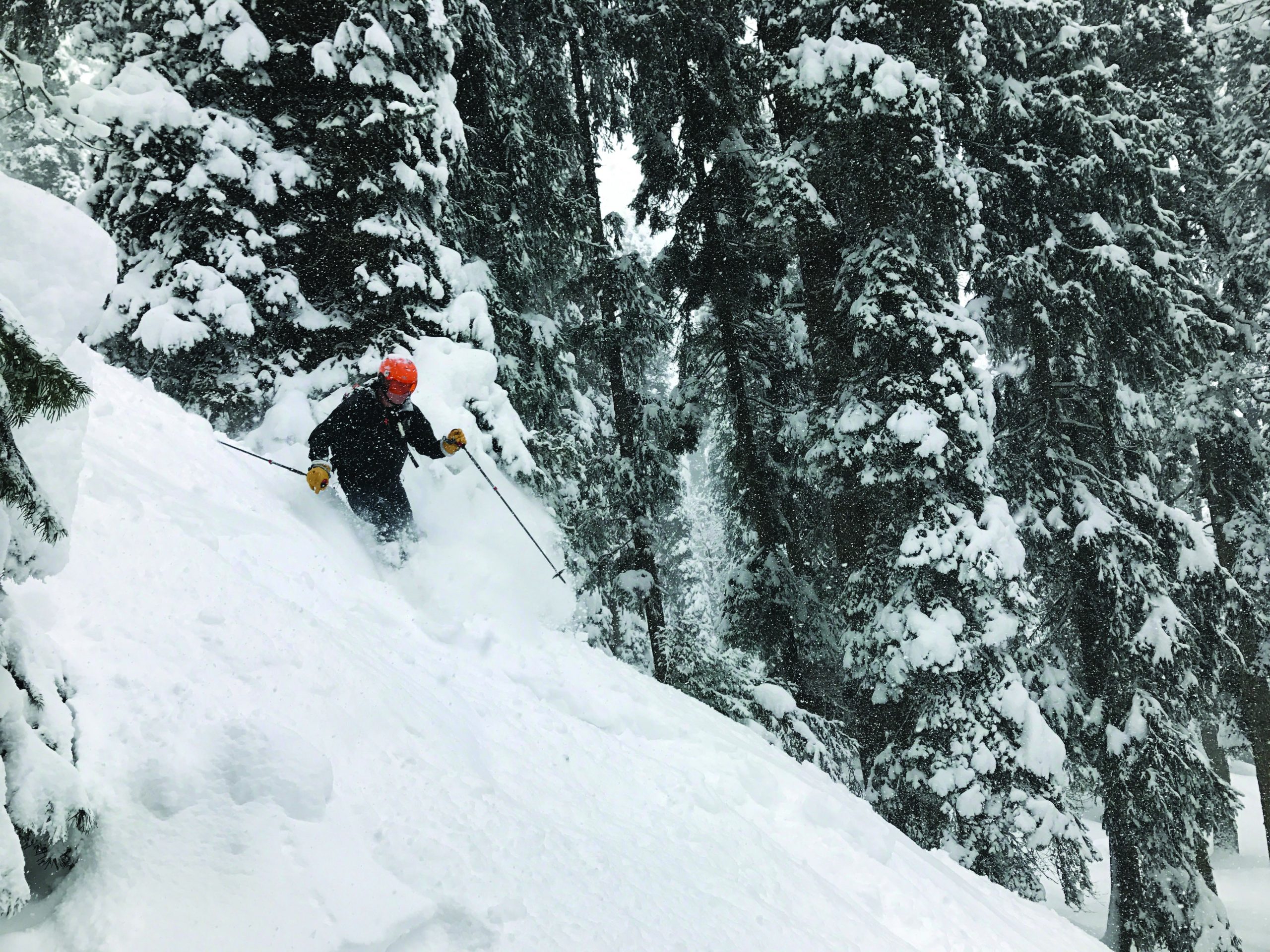 Gulmarg’s unsurpassed scenic beauty and proximity to Srinagar (52 km) makes it one of the premier hill resorts in the country. Originally known as ‘Gaurimarg’ by shepherds, it was christened Gulmarg in the 16th century by Sultan Yusuf Shah, who was inspired by the sight of its grassy slopes emblazoned with wild flowers. The towering peaks above the flower-bedecked meadows are covered with dense forests of tall conifers and gigantic fir and pine trees, vying with each other to touch azure skies.
Gulmarg’s unsurpassed scenic beauty and proximity to Srinagar (52 km) makes it one of the premier hill resorts in the country. Originally known as ‘Gaurimarg’ by shepherds, it was christened Gulmarg in the 16th century by Sultan Yusuf Shah, who was inspired by the sight of its grassy slopes emblazoned with wild flowers. The towering peaks above the flower-bedecked meadows are covered with dense forests of tall conifers and gigantic fir and pine trees, vying with each other to touch azure skies.
Known as the ‘Queen of Meadows’, Gulmarg is a much sought after skiing destination and hosts the highest golf course of the world. The first ski club of India was set up here way back in 1927 by two British army officers, Maj. Metcarp and Maj. Hadow. Skiing is a popular adventure activity and the hill resort hosts two skiing events, during Christmas and Easter. The skiing season usually commences before Christmas (around mid December) and continues until mid April. In January-February, 1998 the first National Winter Games of India were held here, for which facilities were improved and upgraded. The ski resort boasts Kasse Bohrer snow beating machines and five snowmobiles. Good quality equipment, including skis, boots, sticks, gloves and goggles are available on hire from the government-run ski shop. Trained instructors are also available for guidance and coaching.
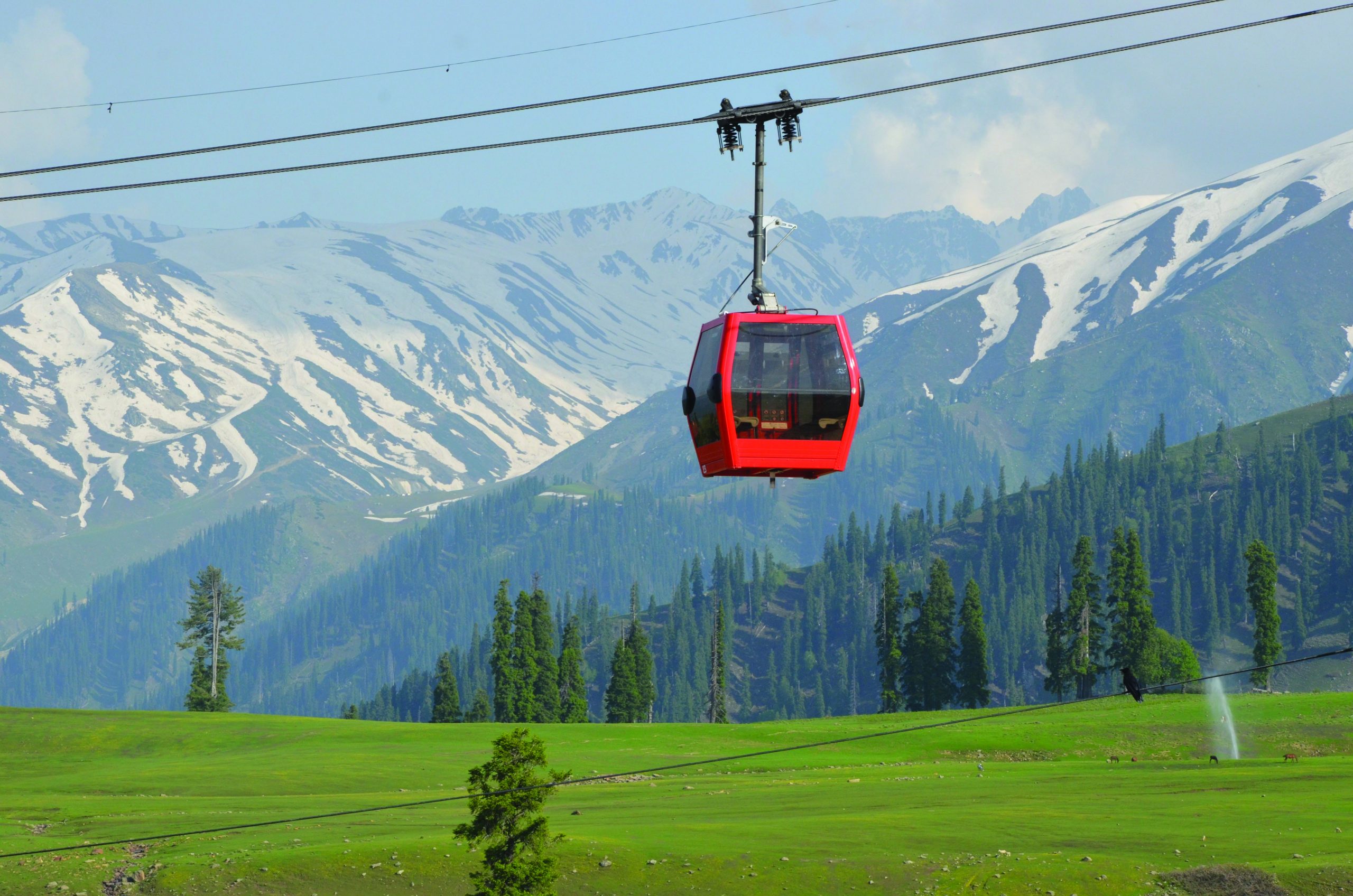 Accommodation. Top-end: Grand Mumtaz Resorts (Rs.9,400 per night), Shaw Inn (Rs.8,466), Khaleel Palace (Rs.4,516). Mid-range: Roseland Cottage (Rs.2,820), Falak Huts (Rs.3,290), Hotel Poshwan (Rs.2,501). Budget: Hotel Green Park Gulmarg (Rs.1,365), Gul Sitara Guest House (Rs.1,353), Rizk the Restaurant (Rs.2,285).
Accommodation. Top-end: Grand Mumtaz Resorts (Rs.9,400 per night), Shaw Inn (Rs.8,466), Khaleel Palace (Rs.4,516). Mid-range: Roseland Cottage (Rs.2,820), Falak Huts (Rs.3,290), Hotel Poshwan (Rs.2,501). Budget: Hotel Green Park Gulmarg (Rs.1,365), Gul Sitara Guest House (Rs.1,353), Rizk the Restaurant (Rs.2,285).
Excursions. A 40-minute trek from Gulmarg is Khilanmarg with its sweeping vistas of mountain peaks and the shimmering waters of Wular and other lakes. Alpather lake (13 km), a picturesque alpine triangular water-body that remains frozen until late June, lies beyond the Apharwat peak. Ninglinallah (8 km), a mountain stream that flows from the snow bed and springs near Apharwat and Alpather through deep pine forest is an enchanting picnic spot.
Baba Reshi, the shrine of Muslim saint Shukruddin, it is enclosed within beautiful lattice work shutters and surrounded by a verandah of carved deodar. Also highly recommended is a walk through the pine forests providing a sweeping view across the valley of the massifs of Nanga Parbat, Harmukh, Sunset Peak and Apharwat Ridge.
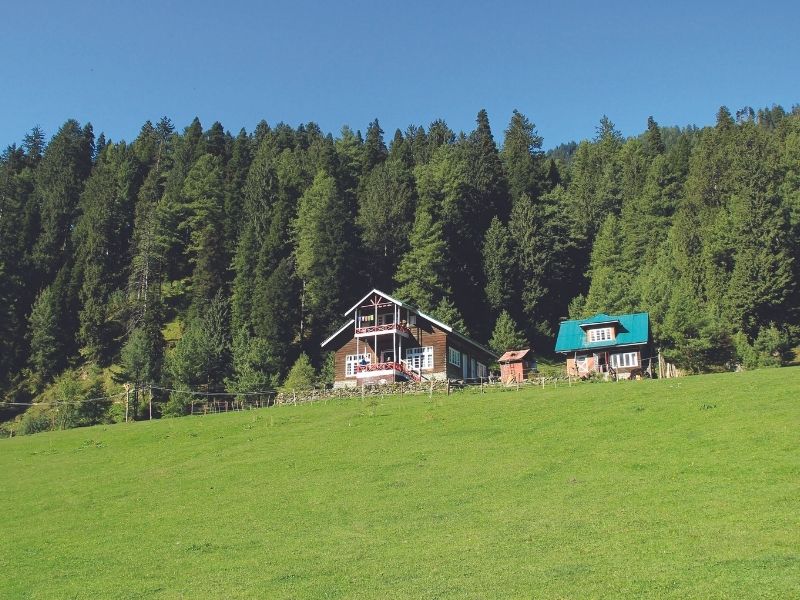
Pahalgam
Situated at the confluence of the streams flowing from Sheshnag lake and River Lidder, Pahalgam (7,029 ft) was once a village inhabited by shepherds. Now it is Kashmir’s premier resort offering upscale accommodation and adventure activities. It is also closely associated with the annual Amarnath Yatra. Chandanwari (9,624 ft), 16 km from Pahalgam, is the starting point of the yatra performed every year in the month of July.
Pahalgam is a favourite destination of Bollywood directors for picturisaton of song and dance sequences. It offers several recreational pursuits including horse riding, golf, fishing in the River Lidder and trekking.
Accommodation. Top-end: Heevan Phalgam (Rs.8,900 per night), Welcomhotels by ITC Hotels, Pine and Peak (Rs.15,500), Phalgam Hotel (Rs.14,100). Mid-range: WoodStock Hotel (Rs.3,685), Pine Cliff Resorts (Rs.2,820), Forest Hill Resorts (Rs.2,733), Hotel Barisaran (Rs.4,759). Budget: Hotel Sun Shine (Rs.1,800), Hotel White House (Rs.1,439), Kashmir Cottage Phalgam (Rs.940).
Jammu
The quaint city of Jammu (pop. 260,000) was the former state’s winter capital which experiences hot sweltering summers and pleasant winters, making it a popular draw among tourists during the cold months. Though Jammu comprises two towns — the old city nestling atop a hill overlooking the River Tawi and a new town across the river — its area is only 20.36 sq km.
Little is known of Jammu’s ancient history. The earliest recorded history dates to 1730 AD when the region came under the rule of the Dogra king, Raja Dhruv Deva. The Dogra rulers moved their capital to the present site and Jammu became an important centre of art and culture, especially the Pahari school of painting. Today, Jammu has earned the sobriquet ‘City of temples’ thanks to its numerous temples and shrines with their glittering shikharas soaring into the sky.
The Raghunath Mandir comprising a cluster of shrines is the largest temple complex in northern India and a popular attraction. Its inner sanctums contain gigantic statues of deities and numerous lingas. Another famous temple in the city is Bawey Wali Mata inside the Bahu Fort, and definitely worth seeing is the Mahamaya temple opposite the Bahu Fort, built in honour of a Dogra princess who lost her life fourteen centuries ago, fighting foreign invaders. The Peer Kho cave shrine, Panchbakhtar and Ranbireshwar are other well-known Shaivite temples.
Peer Mitha is the most venerated Muslim shrine in Jammu. Peer Mitha was a contemporary of Ajaib Dev and Ghareeb Nath revered for their power of prophecy and performing miracles.
Other interesting monuments in Jammu are the majestic Bahu Fort — the oldest edifice in the region, surrounded by terraced gardens, waterfalls and flower beds. Also take in Amar Mahal Palace sited on a plateau overlooking the River Tawi. This grand palace with its sloping roofs and tall towers has been converted into a museum which houses the city’s finest library of antique books and paintings. An entire series of miniatures on the epic Nal-Damayanti can be viewed in the museum.
Shopping. The narrow crowded lanes of Raghunath Bazaar comprise the busiest shopping area in Jammu. On offer are attractive Kashmiri handicrafts, traditional Dogra jewellery and dry fruits such as walnuts, almonds, raisins etc. Jammu is also known for the superlative quality of its basmati rice, rajma (red beans), ampapar (dried and candied mango peel), anardana (dried pomegranate seed) and barfi (milk sweets).
Accommodation. Top-end: Lords Inn (Rs.3,139 per night), Country Inn Suites by Radisson (Rs.3,080), Ramada Jammu City Centre (Rs.4,653). Mid-range: Clarks Inn Express (Rs.2,021), Hotel 17 Miles (Rs.2,679), The Grand Inn (Rs.2,679). Budget: Hotel Park Hills (Rs.1,519), Ranbir Yati Bhavan (Rs.748), Hotel Royal Choice Rs.1,222).
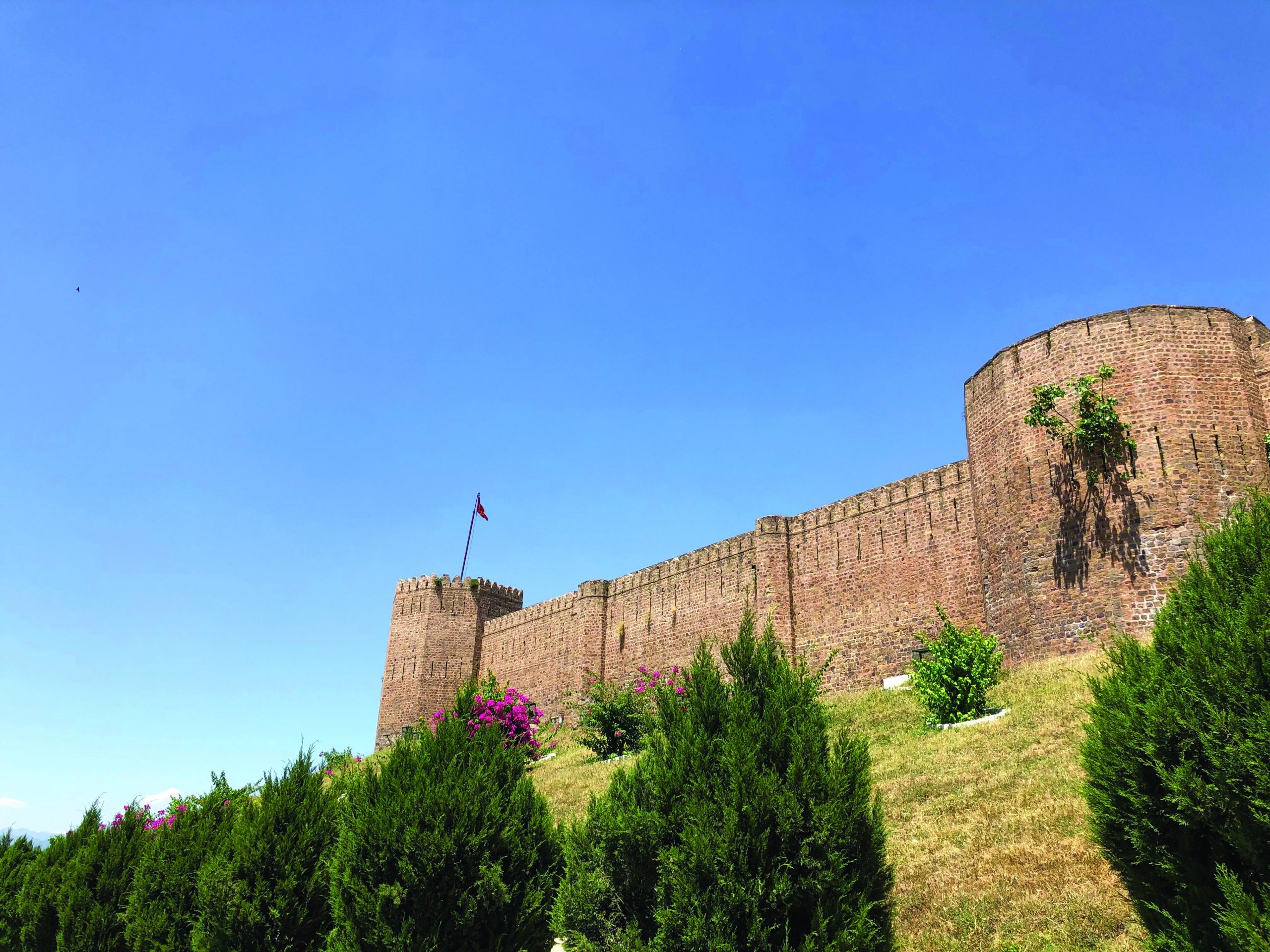 Excursions. There are several accessible day and weekend getaway options. Katra (50 km) is the base camp for a pilgrimage to the revered shrine of Mata Vaishnodevi in the Trikuta hills. The shrine, approachable only on foot via a steep uphill 12 km path, is thronged by nearly 4 million faithfuls annually. Kud (106 km) is a scenic picnic resort on the Jammu-Srinagar highway.
Excursions. There are several accessible day and weekend getaway options. Katra (50 km) is the base camp for a pilgrimage to the revered shrine of Mata Vaishnodevi in the Trikuta hills. The shrine, approachable only on foot via a steep uphill 12 km path, is thronged by nearly 4 million faithfuls annually. Kud (106 km) is a scenic picnic resort on the Jammu-Srinagar highway.
Patnitop (112 km) is perhaps the most attractive and well-developed hill resort in the district. Perched on a plateau at an altitude of 6,679 ft and enveloped by thick pine forests, Patnitop is the vantage point for panoramic valley views of the Chenab basin and has enchanting camping locales.
Kishtwar High Altitude National Park (216 km) is interesting for its marked variations in topography and vegetation. Spread over an area of 400 sq. km, the park has over 15 species of exotic mammals including the musk deer and Himalayan black and brown bear and over 50 avian species.
Adventure sports in J&K
Trekking. A wide range of trekking options are available in the valley. The Sundarani-Jangal Gali-JasarKote-Sanasar route is one of the more popular ones. The tourism department hires out trekking equipment such as rucksacks, tents, feather jackets etc against security deposits. Several travel agencies also offer trekking packages in the valley. For more details about the various trek routes in the state refer to the elaborate trekking brochure prepared by JKTDC.
 Skiing. Gulmarg, Patnitop, Pahalgam are among the favoured skiing locales for beginners as well as experts. Introductory skiing courses are conducted on the gentle slopes of Patnitop during January-February. Accommodation for skiers is also available in huts owned by JKTDC at Patnitop, Kud and Sanasar.
Skiing. Gulmarg, Patnitop, Pahalgam are among the favoured skiing locales for beginners as well as experts. Introductory skiing courses are conducted on the gentle slopes of Patnitop during January-February. Accommodation for skiers is also available in huts owned by JKTDC at Patnitop, Kud and Sanasar.
Aero sports. Paragliding and parasailing have been introduced at Sanasar and Jammu. The tourist office at Jammu hires out equipment and also provides trained guides to help enthusiasts. May-June and September-October are best suited for paragliding.
Fishing. River Lidder is an angler’s delight. The fishing season stretches from April to September. Permits are issued for a maximum of three days on a first-come-first-serve basis. Fishing equipment can be hired in Srinagar. For permits contact the Directorate of Fisheries, Tourist Reception Centre, Srinagar.
Also Read: Hampi – testimony to a golden age

























